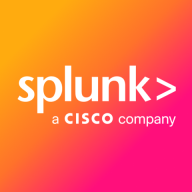

Find out what your peers are saying about Zabbix, Auvik, SolarWinds and others in Network Monitoring Software.
| Product | Market Share (%) |
|---|---|
| Icinga | 2.8% |
| Zabbix | 11.4% |
| SolarWinds NPM | 4.4% |
| Other | 81.4% |
| Product | Market Share (%) |
|---|---|
| Splunk Enterprise Security | 9.2% |
| Wazuh | 10.2% |
| IBM Security QRadar | 7.0% |
| Other | 73.6% |


| Company Size | Count |
|---|---|
| Small Business | 9 |
| Midsize Enterprise | 4 |
| Large Enterprise | 7 |
| Company Size | Count |
|---|---|
| Small Business | 110 |
| Midsize Enterprise | 50 |
| Large Enterprise | 257 |
Icinga is a robust tool for monitoring IT infrastructure, known for its distributed monitoring capabilities and seamless integration with multiple platforms. It efficiently observes servers, network devices, and environments like Linux and Windows, enabling proactive issue identification and resource management.
With a focus on task delegation and clustering, Icinga offers an intuitive interface through its GUI and Icinga Director, simplifying configuration. The extensive plugin library supports diverse technologies, while the API allows automation with tools like Terraform and Ansible. Despite its strengths, users report challenges with data display in the GUI, a need for improved dashboards, and complex configuration processes. Users benefit from its SNMP alerts, email notifications, and automated incident handling, making it essential for managed service environments and enterprises.
What are the key features of Icinga?Icinga is widely adopted in IT environments for monitoring servers, networks, and applications across industries such as finance, healthcare, and technology. Its ability to integrate with various operating systems and automation platforms makes it a versatile choice for industries prioritizing comprehensive surveillance and proactive management of their infrastructure.
Splunk Enterprise Security delivers powerful log management, rapid searches, and intuitive dashboards, enhancing real-time analytics and security measures. Its advanced machine learning and wide system compatibility streamline threat detection and incident response across diverse IT environments.
Splunk Enterprise Security stands out in security operations with robust features like comprehensive threat intelligence and seamless data integration. Its real-time analytics and customizable queries enable proactive threat analysis and efficient incident response. Integration with multiple third-party feeds allows detailed threat correlation and streamlined data visualization. Users find the intuitive UI and broad compatibility support efficient threat detection while reducing false positives. Despite its strengths, areas such as visualization capabilities and integration processes with cloud environments need enhancement. Users face a high learning curve, and improvements in automation, AI, documentation, and training are desired to maximize its potential.
What Are the Key Features of Splunk Enterprise Security?In specific industries like finance and healthcare, Splunk Enterprise Security is instrumental for log aggregation, SIEM functionalities, and compliance monitoring. Companies leverage its capabilities for proactive threat analysis and response, ensuring comprehensive security monitoring and integration with various tools for heightened operational intelligence.
We monitor all Network Monitoring Software reviews to prevent fraudulent reviews and keep review quality high. We do not post reviews by company employees or direct competitors. We validate each review for authenticity via cross-reference with LinkedIn, and personal follow-up with the reviewer when necessary.